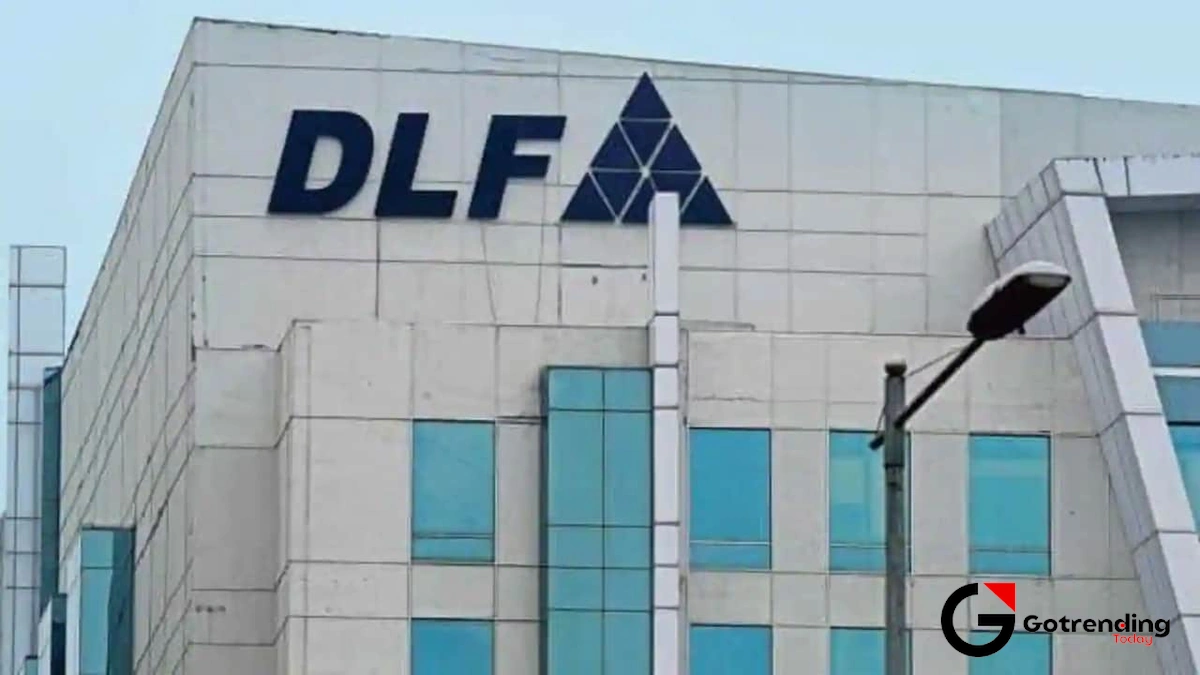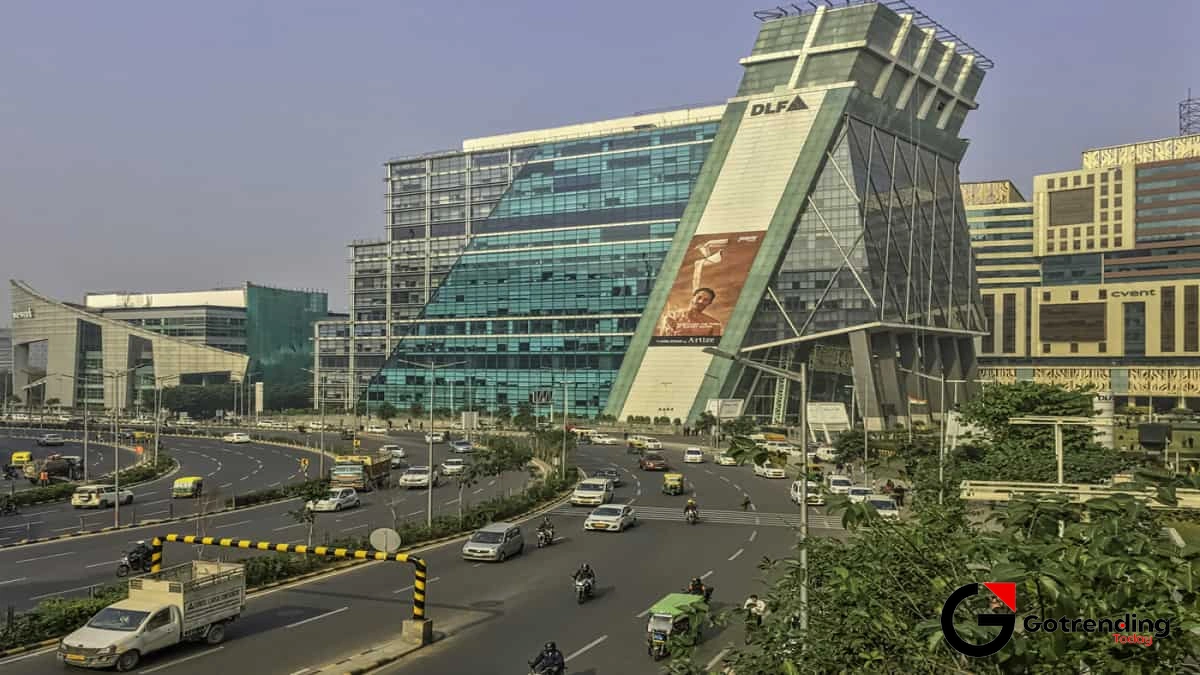The DLF Share Price | More Than a Number, It’s a Story About Modern India
Let’s be honest for a second. When you hear the name “DLF,” what comes to mind? For me, it’s not just a stock ticker flashing on a screen. It’s the glittering glass towers of Gurgaon, the weekend chaos of Cyber Hub, the idea of a sprawling luxury apartment with a view. It’s a name baked into the very concrete of India’s urban aspirations. And that, right there, is the beginning and the end of the whole story when we talk about the dlf share price .
It’s never just about the numbers. It can’t be.
I’ve watched this stock for years, and its chart reads less like a financial document and more like a dramatic novel. It’s seen euphoric highs, gut-wrenching lows, long periods of boring stability, and then sudden, explosive movements. It’s a mirror, in many ways, to the chaotic, brilliant, and often unpredictable journey of the Indian real estate market itself. You’re not just buying a piece of a company; you’re taking a position on the future of Indian cities.
Beyond the Ticker | What the DLF Share Price Really Tells Us

Here’s the thing. A company’s share price is supposed to be a reflection of its future earning potential. Simple, right? But for a real estate behemoth like DLF, the inputs for that equation are incredibly complex. The dlf share price isn’t just reacting to quarterly results or a new project launch. It’s a sponge for macroeconomics.
Think about it this way. When the Reserve Bank of India even whispers about raising interest rates, stocks like DLF shiver. Why? Because higher EMIs mean fewer people are queuing up to buy that 3BHK they’ve been dreaming of. It directly impacts demand. So, the stock becomes a proxy for the entire country’s credit cycle. It’s fascinating. You can get a feel for the health of the urban middle class just by watching how these real estate stocks behave.
And then there’s the government. Policies like RERA (Real Estate Regulation and Development Act), while initially causing some disruption, have been a massive long-term positive for established, organized players. It weeded out a lot of the dodgy, fly-by-night builders, pushing customers toward trusted brands. DLF, for all its past controversies, is a trusted brand. This regulatory shift is a crucial, often overlooked, tailwind for the company and a key part of any serious dlf share analysis .
The Ghost of the IPO and a Leaner, Meaner Future

You can’t talk about DLF without talking about its 2007 IPO. It was the stuff of legends. The biggest IPO in Indian history at the time, launched right at the peak of a raging bull market. The hype was incredible. And then… well, then 2008 happened.
The global financial crisis hit, and the stock, along with the entire market, cratered. For years, DLF was saddled with a mountain of debt, a legacy of that aggressive, pre-crisis expansion. The market punished it severely. For a long time, the name was synonymous with leverage and stalled projects. It’s a classic case study in corporate hubris and market timing.
But here’s where the story gets interesting again. The last five or six years have been about a painful, but necessary, transformation. The company has been on a relentless mission to deleverage. They sold non-core assets (goodbye, wind energy business!), focused on generating cash flow, and slowly but surely, cleaned up their balance sheet. The DLF of today is not the DLF of 2008. It’s a much leaner, more disciplined entity. Understanding this turnaround is vital; it’s a bit like digging into a company’s past to understand its present, something we found essential when decoding KPIT share price and its own unique journey.
This history is precisely why setting a simple dlf share price target can be so tricky. Are you valuing the old, debt-heavy giant or the new, cash-flow-focused enterprise? The market, it seems, is finally starting to believe in the latter.
Reading the Tea Leaves | DLF’s Future Prospects and Headwinds

So, what’s next on the horizon? The biggest story for DLF’s future prospects is, without a doubt, the premiumisation of the Indian market. Post-pandemic, there’s been a clear shift. People don’t just want a house; they want a better house. More space, better amenities, greener surroundings, and the security of a well-known developer. DLF lives and breathes this segment. Their recent launches in the luxury and super-luxury space have sold out in hours, not days.
This is their playground. They have an unparalleled land bank in key areas, especially in the NCR, which they’ve held for decades. You can’t just replicate that. That land is the company’s moat, its fortress against competition. You can check out their official listings and project details on the National Stock Exchange (NSE) for a direct look.
But I’m a realist. It’s not all sunshine and sold-out projects. The risk of rising interest rates hasn’t vanished. The broader economy can always hit a soft patch, dampening consumer sentiment. And real estate is, and always will be, a cyclical property market . What goes up can certainly come down. Investing here requires patience and a strong stomach for volatility. It’s a very different ballgame from the excitement surrounding a new listing, like the anticipation around the NSDL IPO GMP , which is all about Day 1 pops and listing gains.
This is a long game. A long-term investment , if you will.
FAQs About the DLF Share Price
Why does the DLF share price seem so volatile compared to other large-cap stocks?
It boils down to the nature of the beast. The real estate sector is highly cyclical and extremely sensitive to economic changes. Interest rates, government policy, and overall consumer confidence have a much more direct and immediate impact on property companies than, say, an FMCG or IT company. This makes its earnings less predictable and its stock price more prone to big swings.
Is the current DLF share price a good reflection of its value?
That’s the million-dollar question, isn’t it? “Value” is subjective. On one hand, you have a company with a massive, irreplaceable land bank, a strong brand, and a clear focus on the high-growth luxury market. On the other hand, its valuation multiples (like Price-to-Earnings) are often higher than the market average. The justification for the current price is a bet on their ability to successfully monetize that land bank and continue dominating the premium segment.
What’s the biggest misconception people have about investing in DLF?
I think the biggest misconception is viewing it as a simple proxy for the entire real estate market. It’s not. DLF is predominantly a luxury and commercial player in specific micro-markets, primarily the NCR. A boom in affordable housing in Tier-2 cities might not directly impact their bottom line. It’s a very specific play on high-end urban consumption.
How important was the debt reduction to DLF’s story?
Absolutely critical. It was everything. For years, the high debt was an anchor dragging the company down, consuming cash flow in interest payments and scaring away investors. By deleveraging, they freed up capital, improved profitability, and fundamentally changed the investment thesis from a survival story to a growth story. Without that, we wouldn’t be having this conversation.
Should I buy DLF shares for the short term or long term?
While I can’t give financial advice, the very nature of this business long project cycles, economic sensitivity lends itself to a long-term perspective. Trying to time short-term swings in a stock like this is incredibly difficult. Most serious investors who look at the dlf share price are likely thinking in terms of years, not months, betting on the broader India urbanization story.
Ultimately, watching the DLF stock is about more than just money. It’s about watching a city’s skyline take shape, one project at a time. It’s a bet on ambition, on the enduring desire for a better life, and on the ever-changing, ever-growing landscape of modern India. And whether you choose to invest a single rupee or not, that’s a story worth following.













